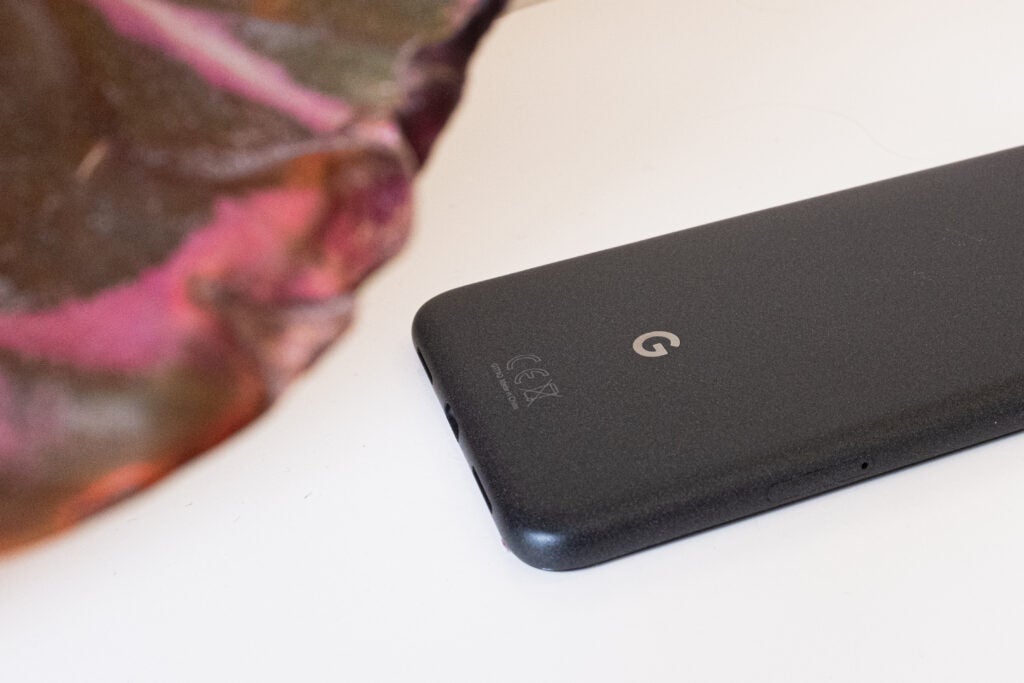Pixel 5 Review
A simpler flagship from Google


Verdict
For £599 (or $699) the Pixel 5 is a surprisingly excellent deal, especially for those who desire a smaller phone and put camera prowess over gaming performance.
Pros
- Typically fantastic Pixel camera
- Improved video recording features
- Far better battery life than Pixel 4
- Small design is refreshing
- The price is great
Cons
- Design a little bland
- An XL version would have been a nice option
- Cameras lack the versatility of some rivals
- No face unlock
Key Features
- Review Price: £599
- 6-inch FHD+ OLED display
- 12MP + 16MP rear cameras
- 4000mAh battery
- IP68
- Qi charging
The Pixel 5 is the antidote to the £1000+ smartphone. Simple, functional and designed for people to use rather than just to look pretty.
It’s fair to say the Pixel 4 didn’t work. Even though it had a great camera, it fell short of its early promise due to awful battery life and an underutilised and forgettable radar system. A year later and Google’s latest flagship is about as different as it could be.
The soli radar chip and the gesture-controlled UI are gone, as is the Pixel 4’s flagship processor and big screen design. But most importantly, gone is that high-price. Meet the £599 Pixel 5.
We’re expecting the Pixel 6 and the Pixel 6 Pro to arrive this year, so make sure to visit our guides to find out what could be in store for the Pixel 5’s successor.
Screen and Design – The small Android phone we’ve been waiting for
The Pixel line seems to redefine itself every year and with each iteration the changes always bring some sort of big issue. The Pixel 2 had a bad screen; Pixel 3 XL adopted the most egregious notch we’ve ever seen and Pixel 4 suffered from some of the worst battery life around. Google has tried to stop the trend continuing this year by pulling the Pixel 5 back, focusing on the basics and targeting a more mid-range billing.
This is still the flagship Google phone for 2020, however instead of taking on the iPhone 12, Samsung Galaxy Note 20 Ultra and Huawei Mate 40 it’s taking a more restrained approach.
Related: Pixel 5 vs Pixel 4

Pixel 5 is a simple phone. And nowhere is that more obvious than in its design. The black version I have is a little bland visually, without any design flair or unique touches. There’s a ‘Sorta Sage’ hue available too, which is a little more interesting.
Actually pick up the phone though and things are far more positive. Unlike the Pixel 4a series, the Pixel 5 has an aluminium frame which gives it a tougher feel. This metal is then covered with a finely textured coating that is most comparable to thick paper. It feels great to hold and far more ‘premium’ than the Pixel 4a – even though they look very much the same in pictures. I do wish that the frame with a little tighter to the glass covering the display, as the small gap has already become a home for bits of dust to get stuck.
Related: Best Android phone
Where the Pixel 5 really sets itself apart from other Android phones is its size. This is a small phone – smaller than the Galaxy S20, OnePlus 8 and most others we’ve reviewed this year. It’s even smaller than the 6-inch display suggests, as Google has done what very few other Android phones have managed and slimmed the bezel all the way around the screen to a uniform tiny size. If you like the size of the smaller iPhone 11 Pro, you’ll like this.
I do have to admit the lack of an XL option is a shame, especially for media watching on the go and utilising the vast array of game streaming services. Still, there’s plenty of choices if you want a larger device and it’s nice to see Google focus on those who prefer something smaller.
Having reviewed mostly big phones this year, switching to the Pixel 5 was just a refreshing as when I first put my SIM inside the Pixel 4a. After getting used to the cramped keyboard, the comparatively tiny dimensions and lightweight (155g) body make this so easy to hold and use with one hand.
On the back there’s a shiny G logo, a camera array inside a square outline and a capacitive fingerprint scanner. This scanner is very fast and far more reliable than any in-display option, but it’s so flush with the back that it’s very easy to accidentally press. I had to turn off the option for it to bring down the notification tray with a swipe as I kept accidentally hitting it.
Even though there have been some sacrifices throughout the Pixel 5 to reach the appealing £599 ($699) price, it still remains an IP68 rated device. There’s no headphone jack though (you’ll still find that on the 4a and 4a 5G) and the buttons feel a bit plasticky.
Related: What is 5G?

The 6-inch screen itself is great. There’s a cutout for the front camera but it’s small-enough that content still feels immersive. It’s an OLED panel with a FHD+ resolution (not QHD+, but at this size that’s not an issue in the slightest) and support for HDR 10. It’s a bright, colour accurate panel that really shines. Covering the display is Gorilla Glass 6.
My only real issue is the annoying auto-brightness, which is too slow to catch up with the environment.
Setting the Pixel 5’s display apart from the 4a and 4a 5G is the option of a quicker 90Hz refresh rate rather than 60Hz. This can be toggled on and off and switches the refresh rate from 60Hz to 90hz depending on what you’re doing. The result is smoother scrolling and an extra feeling of speed.
Performance – Not quite flagship, but you probably won’t notice
There will no doubt be those who instantly discount the Pixel 5 for not possessing the top-of-the-line Snapdragon 8-series chipset. For most people though this won’t be an issue, as the Pixel 5 still feels like a fast phone.
The Snapdragon 765G chipset used here is very capable and it’s been used in a load of phones this year, ranging from cheaper options to the £1000+ Moto Razr 5G. It’s not as fast in benchmarks as an 8-series chip and there is a little more lag when opening apps or gaming. However you’ll probably only notice these if you’re big into smartphone gaming (I’d suggest looking elsewhere) or putting it directly against something running a Snapdragon 865.
If switching to this chip allowed Google to spend the money elsewhere (wireless charging, an IP rated body, better camera optimisation) then it’s absolutely the right thing to do. I also applaud Google for going with 8GB RAM, when 6GB would probably have been fine. Switching between apps is smooth and they stay in memory for ages, meaning less reloads. A single 128GB storage option, with no expandability, could be a little more limiting to certain users.
Another benefit of the 765G is that it’s compatible with a 5G modem, and like most phones this year the Pixel 5 is a 5G phone. If you’re in a 5G area, on a suitable plan and with a capable SIM (the likelihood is that your SIM is already 5G capable) then you will access the 5G data.
If you’re in the US, the Pixel 5 version also packs the right antennas for mmWave 5G which is likely why it’s a little pricier than the UK. We have no use for mmWave here (yet) so it’s a smart move leaving that off and offering us a cheaper version.
5G isn’t, for me, a reason to buy a phone or upgrade a 4G phone yet – but it’s a ‘nice to have’.
The speakers are fine and loud for such a small phone but far from fantastic; call quality is great with strong mics and there is NFC and Bluetooth 5. You are missing WiFi 6 though, which might annoy some who have just picked up a fancy new router.
Android 11 comes installed out-of-the-box with the same Pixel skin and launcher Google has used for a few years now. New features include a better battery saving mode that turns off a lot of functionality for far better endurance (ideal for camping or festivals), higher-quality Duo video calls and you’ll always be first with new Assistant features.
The best software trick remains the Recorder app, which is the finest solution I have ever used for transcribing live audio. It works without an internet connection, can tell the difference between people, pets and even musical instruments and you can now share little tidbits of audio.

Some bits of Android 11 are a little annoying, though. Pushing the music controls into the quick settings menu is baffling and doesn’t even seem to work with every music apps (Audible, for example) making it confusing when you’re trying to pause. There’s also no face unlock option, an omission that’s particularly annoying as the rear-facing fingerprint scanner is impossible to hit with the phone on a table.
I do like the smart home and Google Pay actions embedded into a press of the power button, and the clean look is still superior to many of the third-party skins around. You’ll also get updates far faster than with other Android phones.
Camera – Small tweaks refine the Pixel formula even if it lacks the versatility of some rivals
The Pixel 5 camera is certainly more of a gentle step-forward than a giant leap. You still get great snaps in all sort of conditions, but now there’s an ultrawide camera rather than a 2x tele and improved video.
A lot of new features come down to software, which is nothing new for a Pixel device. There aren’t too many differences with the hardware, with it retaining a 12MP f/1.7 main sensor.

During a briefing ahead of Pixel launch, Google reps said that the reason to ditch the tele camera was down to many of the benefits being able to be replicated via software – something you can’t do with an ultrawide.
Related: Best camera phones
If you’ve ever shot with a Pixel or really even seen an image from a Pixel phone then you’ll likely know the characteristics. Images are sharp, with realistic bright colours and great dynamic range. Things are the same here and the improvements to the HDR gets even more detail and nuance in faces. You can take your portrait shots up a shot too, as there’s some nice portrait lighting effects that alters the smooth bokeh behind your infocus subject. We’ve seen stuff like this before, but it’s still nice to have.

The camera is fast enough to capture fast movement

The dynamic range is great
What still gets me every time I take a shot with the Pixel 5 is the natual bokeh, something often missed on other phones. See the pictures of the flowers for instance and you can tell how nicely the background and the lights blur.

There’s a lovely natural blur
In tougher conditions, the Pixel 5 can still offer great results and the night mode – which now pops up automatically when the scene requires it – pulls out brightness you wouldn’t even was there. If you love taking shots at night then this is one of the best options out there.

Lo-wlight performance is great, especially in the colours
Where the Pixel can’t compete so much is in versatility. While it can software zoom, this is no match to the vastly superior tele sensors on the competition and it removes a string from the Pixels bow.
There some notable upgrades to video recording with the Pixel 5 and they are very much welcome. You can now shoot 4K 60 and there are multiple levels of stabilisation, including a dedicated mode for action shooting and another than offers a ‘cinematic’ pan. Both of these hugely increase the versatility of the video feature. Still, with the iPhone 12 offering Dolby Vision capture and editing the Pixel 5 still feels a little bit lacking.
Battery life – Has Google fixed its battery life woes with the Pixel 5?
For such a small phone, the 4080mAh battery inside the Pixel 5 seems huge. It’s significantly bigger than the 3140mAh inside the Pixel 4a, for example. Of course, with the 5 you have extra tech eating away at the juice, like 5G and the Smooth Display.
I was very disappointed with the endurance of the Pixel 4 and 4 XL as they were some of the few Android phones of 2019 that required multiple charges to consistently get them through the day. Whether that was down to poor software optimisation or smaller than required cells, the result just wasn’t good enough.
The good news is that Pixel 5 is far better. This can easily make it through the day, even with the 90Hz Smooth Display option on and 5G enabled. While these results are lightly a bit skewed by the prevalence of working from home, the Pixel 5 can comfortably get 6 hours of screen-on time and I have gone through a full day and night and not needed to plug in until the following morning. The endurance is certainly better than the iPhone SE (a similarly-sized) phone and in my tests it beats out the S20 (Exynos version) comfortably.
Google isn’t utilising any super-fast charging tech here and the Pixel 5 can’t compete with Super Vooc 65w charging you’ll find in many Oppo (and other brands like OnePlus and Realme) phones. Instead, it’s the usual 18w USB-PD standard solution. A full charge takes about 90 minutes, but you can get 50% in around 30. There’s 10w wireless charging if you’ve got the Pixel Stand charger or slower if you’re using a standard Qi pad.
Wireless charging is far from a given at this price and it’s often a feature left out either to save costs or to heap more focus on a fast wired solution. Even though the speeds are slower, I still find wireless charging a truly useless feature and one’s that I am disappointed to see ditched so often.
There’s a reverse wireless charging feature too, which is handy for juicing up Qi-enabled buds or smartwatches (or even phones if you’re happy to wait) by plopping them on phone’s back. It’s a little slow yes, but worth it when you’re without a charger and your Pixel Buds have just run out of juice.
Should you buy the Pixel 5?
For £599 (or $699) the Pixel 5 is a surprisingly excellent deal, especially for those who desire a smaller phone and put camera prowess over gaming performance.
Don’t get me wrong, this isn’t the most exciting phone of 2020, however it’s a smart move from a brand that has struggled to really position itself alongside Apple, Samsung and Huawei as a true flagship smartphone provider.
Throughout my week with the Pixel 5 many aspects have impressed me, from the great display to the solid battery life. It’s well-designed, if a little bland, with a real thought for the user. The aluminium frame and textured back make this one of the nicest phones to hold. I also appreciate Google for keeping some more typically ‘flagship’ features around, notably an IP rating and wireless charging.
Related: Best mid-range phones
Of course, the Pixel’s star quality has always been in its camera. And yes, photos taken with the Pixel 5 are great. It remains the dynamic range champ, with excellent night shooting and the HDR improvements give more realism to faces. But the lack of a zoomed lens does offset it’s versatility somewhat.
Even at the sub-£600 price, the Pixel 5 has lots of competition. There’s the OnePlus 8T which does pack a truly flagship processor and the excellent Samsung Galaxy S20 FE is only slightly more at £699. Then there’s the £699 iPhone 12 Mini, which is even smaller.


